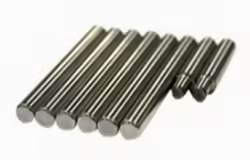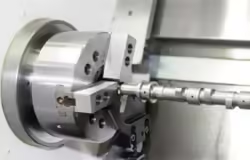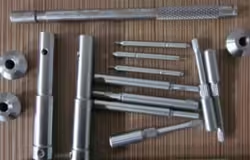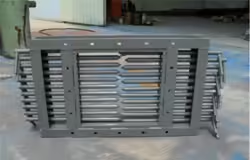
1018 vs 1020 Steel: What Most Buyers Get Wrong
Table of Contents
Introduction

When it comes to selecting materials for various applications, steel grades like 1018 and 1020 are some of the most commonly used low-carbon steels. While both are widely used and share similar characteristics, there are subtle differences between them that buyers often overlook. Many assume that these two grades are interchangeable due to their close chemical compositions, but 1018 vs 1020 steel has more nuances that can significantly affect the final product’s performance.
For manufacturers, contractors, and engineers, understanding these distinctions is crucial for ensuring material choice aligns with specific project requirements. At Henan Jiyuan Iron & Steel (Group) Co., Ltd., we have decades of experience producing high-quality steel and guiding clients through the decision-making process. This blog post aims to provide clarity on the 1018 vs 1020 steel comparison, addressing what most buyers get wrong and how to make a more informed decision.
What Most Buyers Get Wrong About 1018 vs 1020 Steel

Mistaking Composition Similarities for Interchangeability
One of the most common misconceptions when comparing 1018 vs 1020 steel is assuming that these two grades are virtually identical. While they do share similarities in terms of low carbon content, 1018 vs 1020 steel grades have enough differences to significantly impact their performance in different applications.
1018 Steel:
- Contains approximately 0.18% carbon.
- Known for its superior machinability, making it ideal for parts that require precise shaping, especially in 1018 vs 1020 steel comparisons.
- Offers excellent welding properties, making it a versatile material for various industrial applications involving 1018 vs 1020 steel.
1020 Steel:
- Contains slightly more carbon, around 0.20%.
- Offers slightly higher tensile strength than 1018 steel, which is essential for parts that will be subjected to heavy loads, particularly when analyzing 1018 vs 1020 steel for structural use.
- While it retains good machinability, it tends to be less ductile than 1018 steel, which can affect decisions in projects requiring flexibility in the 1018 vs 1020 steel debate.
Key Differences in Carbon Content and Strength
This small increase in carbon content gives 1020 steel higher strength than 1018 steel. While the tensile strength for 1018 is approximately 440–470 MPa, 1020 can reach up to 485–500 MPa. This strength advantage makes it a better option for heavy-duty applications where higher load capacity is required, especially when comparing 1018 vs 1020 steel. However, the added carbon content reduces its formability and machinability, which is an important factor to consider when choosing between the two in any 1018 vs 1020 steel decision.
Ignoring the Impact of Mechanical Properties
Another critical factor that buyers get wrong in the context of 1018 vs 1020 steel is ignoring the subtle but important differences in mechanical behavior. While both steels may appear interchangeable at first glance, their performance under stress, load, or machining conditions can vary significantly depending on the specific use case. Understanding these differences is key to making a cost-effective and performance-based decision when evaluating 1018 vs 1020 steel for your project.
Comparison Table – 1018 vs 1020 Steel Properties
| Property | 1018 Steel | 1020 Steel |
|---|---|---|
| Carbon Content | 0.15–0.20% | 0.18–0.23% |
| Tensile Strength (MPa) | 440–470 | 485–500 |
| Yield Strength (MPa) | 370–400 | 410–450 |
| Elongation (%) | 15–20 | 10–15 |
| Machinability (%) | 78 | 72 |
| Weldability | Excellent | Excellent |
| Formability | Excellent | Good |
As you can see from the table, 1020 steel is stronger, but 1018 steel offers better ductility and elongation, making it suitable for parts that need to undergo significant deformation before breaking.
Application Confusion: Using the Wrong Steel for the Job

Mismatching Steel Grades to the Industry Needs
Choosing the right steel grade for a specific application is a critical decision that can significantly influence the performance, cost-efficiency, and longevity of the end product. When considering 1018 vs 1020 steel, it’s essential to understand how the slight variations between these two low-carbon steels can impact the overall success of a project. 1018 steel and 1020 steel share some similarities, but they are distinctly different in ways that can drastically affect how well they perform in various applications.
1018 steel has slightly lower carbon content and offers better machinability, while 1020 steel, with its slightly higher carbon content, provides superior strength. Mismatching steel grades to the specific needs of an industry can lead to inefficiencies, increased costs, and, ultimately, product failure.
For manufacturers and engineers, understanding the differences between 1018 vs 1020 steel is crucial to selecting the right material for the job. A good steel choice will result in enhanced performance, cost savings, and fewer product failures in the field.
Common Applications for 1018 Steel
- Precision machining parts: Due to its superior machinability, 1018 steel is often used for gears, shafts, and spindles.
- Automotive and aerospace applications: The ductility of 1018 steel makes it ideal for parts that need to be bent or shaped.
- Pin and bolt production: The ability to machine 1018 easily means it’s often used in manufacturing small parts like pins, bolts, and fasteners.
Common Applications for 1020 Steel
- Structural components: 1020 steel is used in components that must withstand significant forces, such as in automotive axles and structural beams.
- Welding and fabrication: Its ability to hold up under pressure while being welded makes 1020 steel a good choice for heavy-duty machinery.
- Cold drawn parts: 1020 is often used in cold drawn applications, where strength is more important than formability.
While 1018 steel is often seen as the more cost-effective choice, 1020 steel may be more suitable for certain applications where strength and durability are paramount. Choosing the wrong material can not only lead to product failure but also unnecessary costs in terms of material wastage, labor, and time. Engineers and buyers must carefully consider the specific needs of the application to ensure the right material is chosen. 1018 vs 1020 steel isn’t just about the cost difference but about understanding which material best suits the performance requirements of your project.
The Role of Customization and Steel Quality
Why Manufacturer Expertise Matters in 1018 vs 1020 Steel
Steel suppliers play a crucial role in ensuring that the material you receive is tailored to meet the specific needs of your application. At Henan Jiyuan Iron & Steel (Group) Co., Ltd., we specialize in producing 1018 and 1020 steel in a range of grades and specifications, offering custom steel solutions to meet our clients’ unique needs.
As a high-tech enterprise with over 60 years of experience, Jiyuan Steel ensures that every piece of 1018 or 1020 steel meets stringent quality standards. We provide comprehensive testing and inspection services, allowing us to deliver precise and reliable materials for a variety of industries, including:
- Automotive components: From engine parts to transmission systems, 1018 and 1020 steel play a vital role in automotive manufacturing. The versatility of 1018 steel allows for the precision required in smaller automotive components, while the strength of 1020 steel ensures performance in critical structural parts.
- Construction machinery: The robust and durable characteristics of 1020 steel make it the ideal choice for construction machinery components such as frames, shafts, and gears. Its ability to withstand heavy loads and resist wear is vital for equipment used in construction and mining operations.
- Wind power generation: In renewable energy, the strength and durability of 1020 steel are critical for components used in wind power generation systems. The steel’s resistance to wear and fatigue ensures that turbines and other critical machinery components last longer and perform efficiently in harsh environments.
Our advanced technology and expertise allow us to deliver materials with superior performance and value, ensuring that 1018 and 1020 steel meet your exact requirements.
Conclusion
Understanding the subtle but important differences between 1018 steel and 1020 steel is essential for making the right material selection. By recognizing how carbon content, mechanical properties, and application needs intersect, you can avoid costly mistakes and improve the quality of your products.
At Henan Jiyuan Iron & Steel (Group) Co., Ltd., we’re committed to helping you make the right decision for your specific needs. Whether you need the enhanced strength of 1020 steel or the superior machinability of 1018 steel, we provide high-quality products tailored to your project requirements.
Choose Jiyuan Steel for precision, quality, and expertise in every project.
FAQ
Which is better: 1018 or 1020 steel?
The choice depends on your application. If you need stronger material for load-bearing parts, 1020 steel is a better option. If machinability is more important, 1018 steel would be the better choice.
Can I use 1020 steel instead of 1018 steel?
While they are similar, 1020 steel has higher strength, which may be necessary for specific structural components. However, it may not be as easy to machine as 1018.
Is 1018 steel more expensive than 1020?
Generally, 1018 steel tends to be slightly more cost-effective than 1020, but prices can vary depending on the supplier, processing, and market conditions.
Which steel is easier to weld?
Both 1018 and 1020 steel are excellent for welding. However, 1018 steel tends to be slightly more forgiving due to its lower carbon content.
Where can I source quality 1018 or 1020 steel?
At Henan Jiyuan Iron & Steel (Group) Co., Ltd., we provide customized steel solutions for a wide range of industries. Contact us for quality steel products and tailored services.






